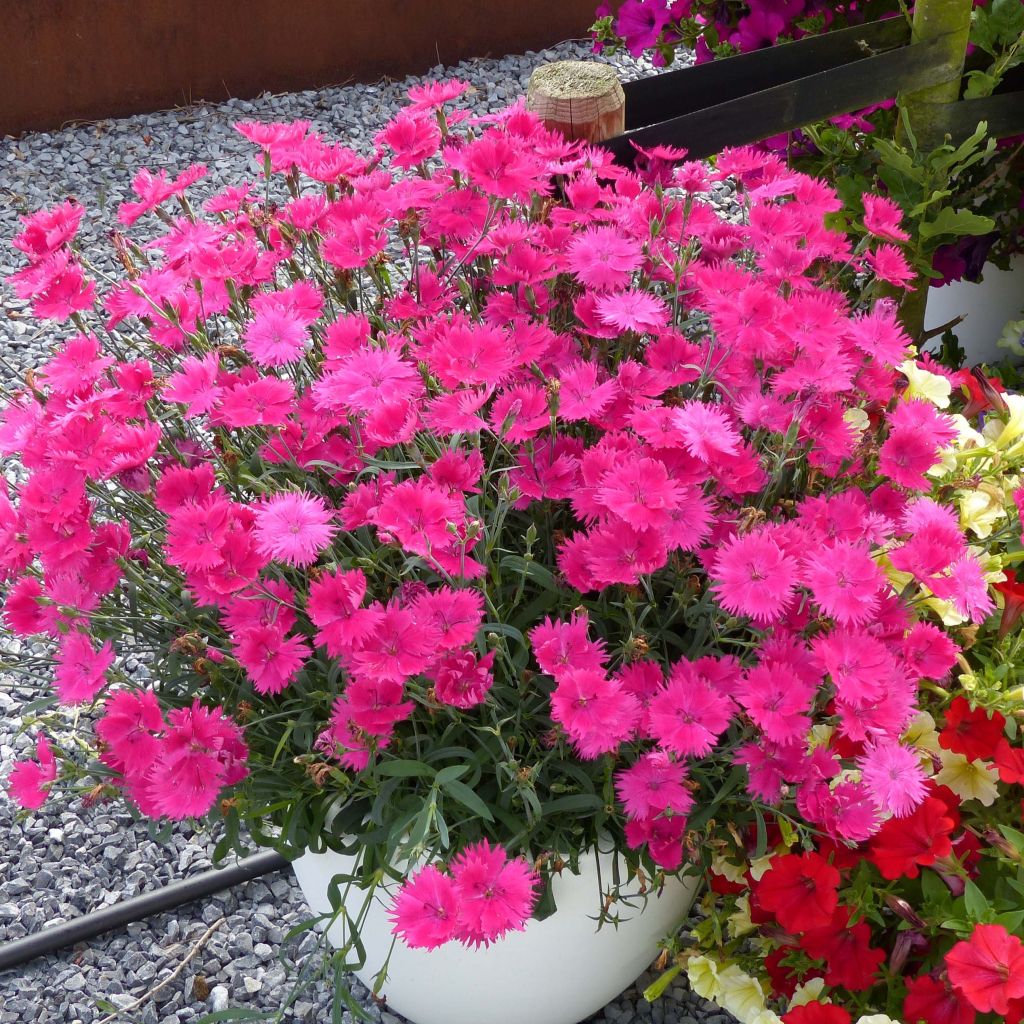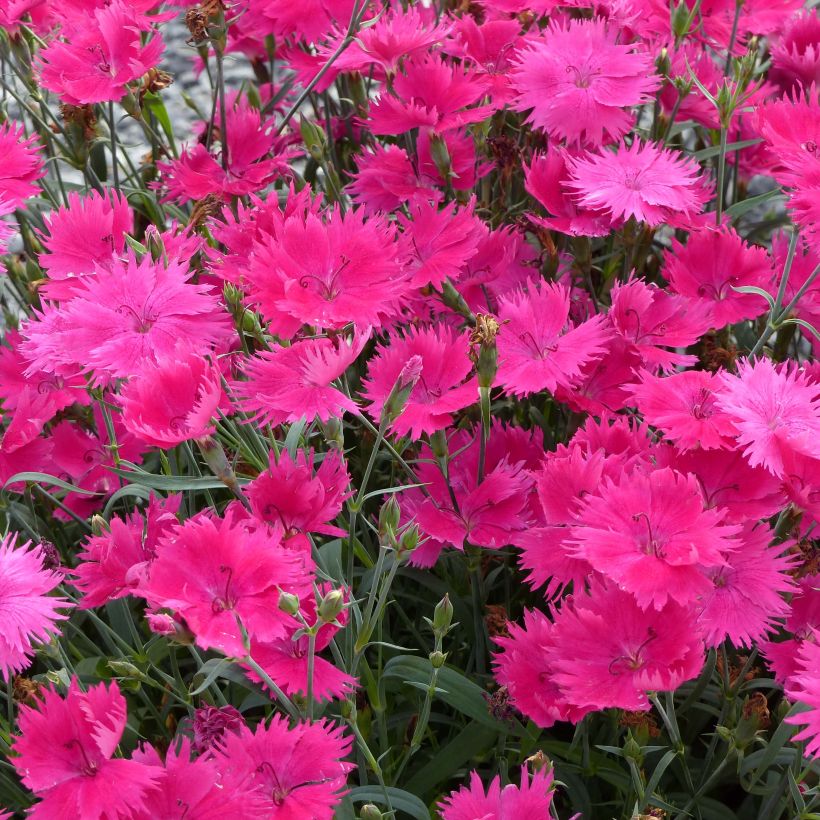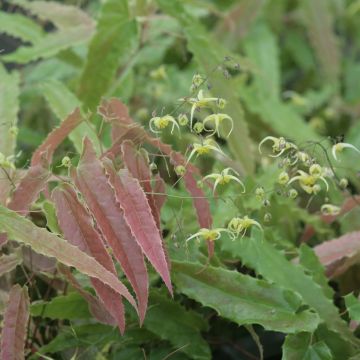

Dianthus Suntory Pink


Dianthus Suntory Pink


Dianthus Suntory Pink


Dianthus Suntory Pink
Dianthus Suntory Pink
Dianthus x superbus Suntory® Pink ('Sunnade')
Pink
Beautiful little young plant with a bud already. Planted on the same day and flowered the next day.
Philip, 17/05/2021
Special offer!
Receive a €20 voucher for any order over €90 (excluding delivery costs, credit notes, and plastic-free options)!
1- Add your favorite plants to your cart.
2- Once you have reached €90, confirm your order (you can even choose the delivery date!).
3- As soon as your order is shipped, you will receive an email containing your voucher code, valid for 3 months (90 days).
Your voucher is unique and can only be used once, for any order with a minimum value of €20, excluding delivery costs.
Can be combined with other current offers, non-divisible and non-refundable.
Home or relay delivery (depending on size and destination)
Schedule delivery date,
and select date in basket
This plant carries a 12 months recovery warranty
More information
We guarantee the quality of our plants for a full growing cycle, and will replace at our expense any plant that fails to recover under normal climatic and planting conditions.
Would this plant suit my garden?
Set up your Plantfit profile →
Description
Dianthus 'Suntory Pink' is a particularly early and floriferous hybrid carnation, flowering from spring until the first frost. It tirelessly produces lots of small, single, dazzling fuchsia-red flowers on fairly short stems, on a plant that remains densely compact throughout the season. These qualities make this variety good for decorating terraces and balconies, as well as flower beds. This variety is not very hardy and is usually grown as an annual. Provide it with fertile, moist but well-drained soil, in full sun.
The 'Suntory Pink' carnation belongs to the Caryophyllaceae family. It is part of a brand new series of hybrids selected in Germany for their very rapid growth and excellent floribundity. It is a cultivar resulting from the cross-breeding between D. superbus and D. chinensis. Dianthus superbus is a perennial native to the mountains of Europe and temperate Asia, where it grows in wooded and moist meadows. Dianthus chinensis, on the other hand, is a small annual, biennial or short-lived perennial, frost-sensitive species, with endless flowers.
'Suntory Pink' carnation grows quickly to form a lovely clump capable of blooming, in just a few weeks. Its mature size will not exceed 30-35 cm (12-14in) high when flowering, with a spread of 30 to 40 cm (12 to 16in). The dense clump has bright fuchsia-red flowers with fringed petals from May to September-October, on fairly short stems, usually with several flowers which are not fragrant. Its linear, glabrous, evergreen and leathery leaves are a superb grey-green. 'Suntory Pink' is sensitive to severe frost: in well-drained soil, it will withstand short freezes of around -10°C (14°F). It is best to propagate it by dividing the clumps to keep it from one year to the next. This sterile variety does not produce seeds.
Dianthus 'Suntory Pink' is an excellent plant for borders and flowering pots. It will accompany the other stars of the terrace such as lobelias, nemophilas, discias, and other Bidens. Its very rapid development is also valuable to fill a new flower bed while waiting for the perennials to take their place. It will enhance the blue, pink, or white blooms of asters, the long flowering of dwarf gauras, calibrachoas...and many more.
Report an error about the product description
Dianthus Suntory Pink in pictures






Flowering
Foliage
Plant habit
Botanical data
Dianthus
x superbus
Suntory® Pink ('Sunnade')
Caryophyllaceae
Pink
Cultivar or hybrid
Other Dianthus - Pinks
View all →Planting and care
Plant Dianthus 'Suntory Pink' in humus-rich soil, enriched with compost, well-drained but remaining moist throughout the season. In a pot, regularly feed with flowering plant food and monitor watering. Choose a very sunny position. In the ground, this plant is not very hardy, perishing below -10 °C. It is a short-lived plant, so divide clumps to keep this flower from one year to the next and overwinter young plants in a cold, frost-free greenhouse.
Planting period
Intended location
Care
-
, onOrder confirmed
Reply from on Promesse de fleurs
Similar products
Haven't found what you were looking for?
Hardiness is the lowest winter temperature a plant can endure without suffering serious damage or even dying. However, hardiness is affected by location (a sheltered area, such as a patio), protection (winter cover) and soil type (hardiness is improved by well-drained soil).

Photo Sharing Terms & Conditions
In order to encourage gardeners to interact and share their experiences, Promesse de fleurs offers various media enabling content to be uploaded onto its Site - in particular via the ‘Photo sharing’ module.
The User agrees to refrain from:
- Posting any content that is illegal, prejudicial, insulting, racist, inciteful to hatred, revisionist, contrary to public decency, that infringes on privacy or on the privacy rights of third parties, in particular the publicity rights of persons and goods, intellectual property rights, or the right to privacy.
- Submitting content on behalf of a third party;
- Impersonate the identity of a third party and/or publish any personal information about a third party;
In general, the User undertakes to refrain from any unethical behaviour.
All Content (in particular text, comments, files, images, photos, videos, creative works, etc.), which may be subject to property or intellectual property rights, image or other private rights, shall remain the property of the User, subject to the limited rights granted by the terms of the licence granted by Promesse de fleurs as stated below. Users are at liberty to publish or not to publish such Content on the Site, notably via the ‘Photo Sharing’ facility, and accept that this Content shall be made public and freely accessible, notably on the Internet.
Users further acknowledge, undertake to have ,and guarantee that they hold all necessary rights and permissions to publish such material on the Site, in particular with regard to the legislation in force pertaining to any privacy, property, intellectual property, image, or contractual rights, or rights of any other nature. By publishing such Content on the Site, Users acknowledge accepting full liability as publishers of the Content within the meaning of the law, and grant Promesse de fleurs, free of charge, an inclusive, worldwide licence for the said Content for the entire duration of its publication, including all reproduction, representation, up/downloading, displaying, performing, transmission, and storage rights.
Users also grant permission for their name to be linked to the Content and accept that this link may not always be made available.
By engaging in posting material, Users consent to their Content becoming automatically accessible on the Internet, in particular on other sites and/or blogs and/or web pages of the Promesse de fleurs site, including in particular social pages and the Promesse de fleurs catalogue.
Users may secure the removal of entrusted content free of charge by issuing a simple request via our contact form.
The flowering period indicated on our website applies to countries and regions located in USDA zone 8 (France, the United Kingdom, Ireland, the Netherlands, etc.)
It will vary according to where you live:
- In zones 9 to 10 (Italy, Spain, Greece, etc.), flowering will occur about 2 to 4 weeks earlier.
- In zones 6 to 7 (Germany, Poland, Slovenia, and lower mountainous regions), flowering will be delayed by 2 to 3 weeks.
- In zone 5 (Central Europe, Scandinavia), blooming will be delayed by 3 to 5 weeks.
In temperate climates, pruning of spring-flowering shrubs (forsythia, spireas, etc.) should be done just after flowering.
Pruning of summer-flowering shrubs (Indian Lilac, Perovskia, etc.) can be done in winter or spring.
In cold regions as well as with frost-sensitive plants, avoid pruning too early when severe frosts may still occur.
The planting period indicated on our website applies to countries and regions located in USDA zone 8 (France, United Kingdom, Ireland, Netherlands).
It will vary according to where you live:
- In Mediterranean zones (Marseille, Madrid, Milan, etc.), autumn and winter are the best planting periods.
- In continental zones (Strasbourg, Munich, Vienna, etc.), delay planting by 2 to 3 weeks in spring and bring it forward by 2 to 4 weeks in autumn.
- In mountainous regions (the Alps, Pyrenees, Carpathians, etc.), it is best to plant in late spring (May-June) or late summer (August-September).
The harvesting period indicated on our website applies to countries and regions in USDA zone 8 (France, England, Ireland, the Netherlands).
In colder areas (Scandinavia, Poland, Austria...) fruit and vegetable harvests are likely to be delayed by 3-4 weeks.
In warmer areas (Italy, Spain, Greece, etc.), harvesting will probably take place earlier, depending on weather conditions.
The sowing periods indicated on our website apply to countries and regions within USDA Zone 8 (France, UK, Ireland, Netherlands).
In colder areas (Scandinavia, Poland, Austria...), delay any outdoor sowing by 3-4 weeks, or sow under glass.
In warmer climes (Italy, Spain, Greece, etc.), bring outdoor sowing forward by a few weeks.



















































